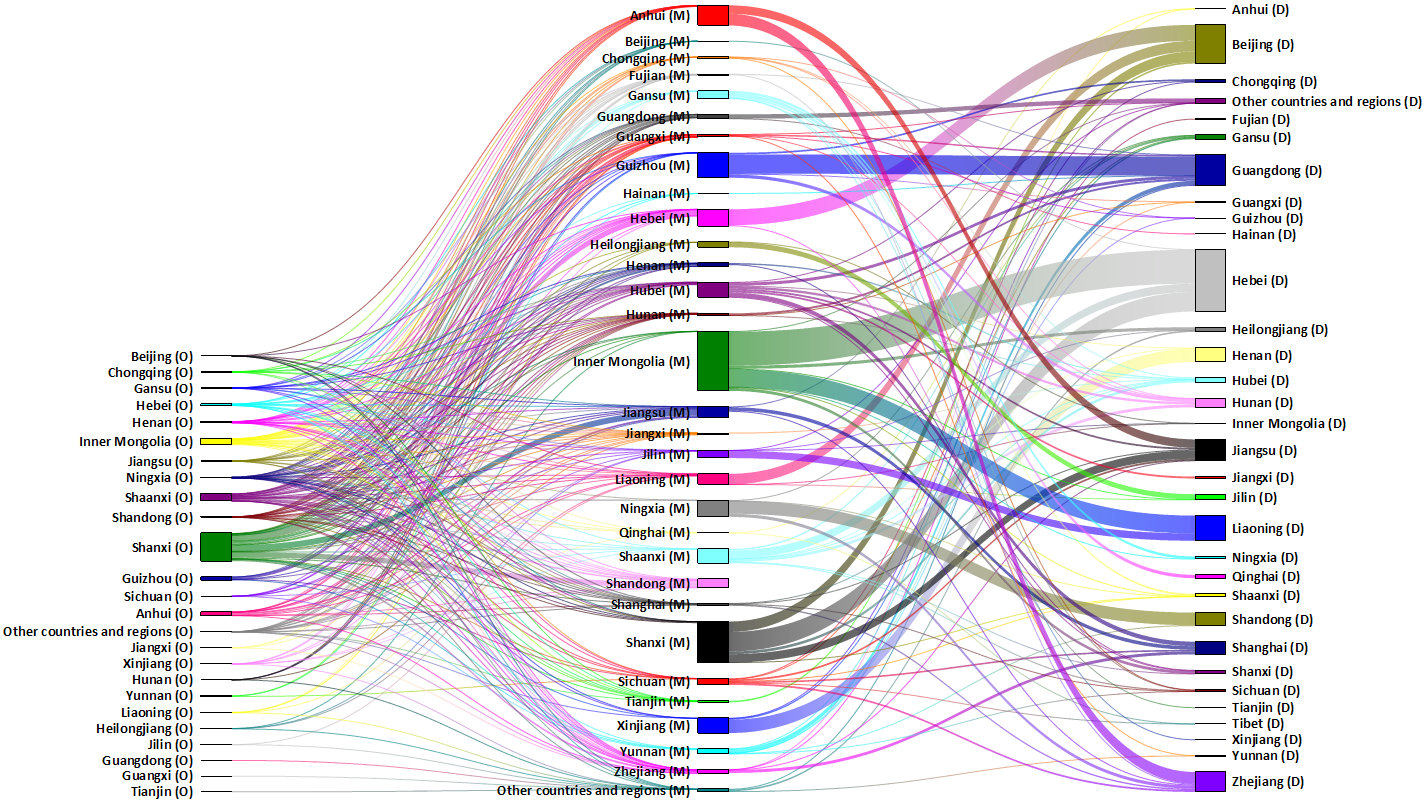Researchers Identify Spatial Carbon Footprint along Coal-to-electricity Chain in China
China has committed to reach its peak carbon emissions as soon as possible before 2030, and to strive to achieve carbon neutrality by 2060. Fully assessing the spatial carbon transfer associated with energy production and consumption activities helps to better understand carbon emission drivers, track carbon sources and clarify carbon reduction responsibilities.
However, previous studies are normally based on the single network method and input-output analysis, and are not ideal for boundary integrity, data reliability, or scale generality.
A research group led by TIAN Yajun from the Qingdao Institute of Bioenergy and Bioprocess Technology (QIBEBT) of the Chinese Academy of Sciences (CAS) proposed an original multi-flow and multi-node (MFMN) model and took China's coal-to-electricity chain in 2016 as an example to explain how carbon footprint is transferred spatially.
The work was published in Journal of Cleaner Production on Jan. 29.
MFMN model was developed based on the geographic information system-life cycle assessment (GIS-LCA) methodology, which takes thermal coal trade and coal power transmission as multi flows and provinces as multi nodes.
"This MFMN model is particularly effective to identify the spatial carbon transfer and can provide guidance for regulating the relationship between economic development and carbon reduction," said TIAN Yajun, the corresponding author of this study.
Results showed that about 120 Mt CO2eq of carbon (from thermal coal production) was first transferred along with interprovincial thermal coal trade, and about 600 Mt CO2eq (from thermal coal and coal power production) was then transferred along with interprovincial coal power transmission.
The two-stage carbon transfer leads to a significant difference of about 500 Mt CO2eq in production- and consumption-based carbon accounting. Approximately 8% of the first-stage carbon transfer was transferred again along with coal power transmission.
The reflux of secondary transferred carbon back to original coal-producing provinces and mutually secondary transferred carbon between two coal-producing provinces were revealed, which accounted for 3.4% and 30.0% of the total second transferred carbon, respectively.
The tracking of carbon sources hinted a complex tradeoff situation of thermal coal and coal power. As a typical carbon inflow province, Beijing introduced lots of coal power from Hebei and Liaoning, however, the tracking of secondary transferred carbon showed that approximately 70% of carbon footprint embodied in thermal coal inflowed to Beijing came from Shanxi.
"The major contribution of the proposed model is to fill the knowledge gap of spatially tracking multistage carbon transfer on finer sectoral and spatial scales," said TIAN.
This work was led by Tian Yajun, director of EEBD&SRC, and supported by Chinese Academy of Engineering and Shandong Energy Institute (SEI).

Carbon transfer along the coal-to-electricity chain in Chian (Image by TIAN Yajun)
(Text by Tian Yajun)
Contact:
CHENG Jing
Qingdao Institute of Bioenergy and Bioprocess Technology, Chinese Academy of Sciences
Tel: 86-532-80662647/80662622
E-mail: chengjing@qibebt.ac.cn